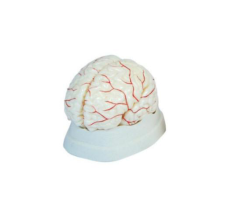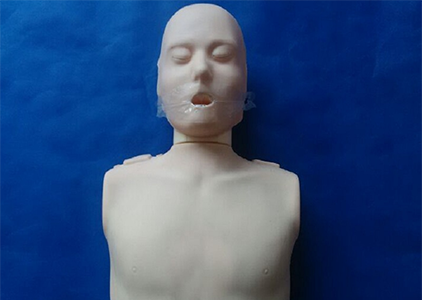
Cerebral artery model plays an indispensable role in medical teaching, especially in neuroscience, anatomy, pathology and clinical practice. These models help students gain a deep understanding of the complex structure and function of the cerebral artery system through intuitive and vivid presentations, thus laying a solid foundation for their future medical practice.

First, the cerebral artery model provides students with an intuitive learning tool. In medical education, understanding the anatomy of the cerebral artery system is an important part of basic knowledge. The cerebral artery model can clearly show the direction, branch and connection of the cerebral artery, so that students can intuitively understand these complex structures by observing the model. This intuitive way of learning helps students to form a deep impression and improve the memory effect.
Secondly, cerebral artery model is helpful to develop students' spatial imagination ability. The cerebral artery system is a three-dimensional structure, and students need to have certain spatial imagination ability when understanding its structure. The cerebral artery model can help students build three-dimensional spatial concepts, so that they can better understand the three-dimensional structure of the cerebral artery system. The cultivation of this ability is of great significance for students' future medical practice, because many operations and diagnoses in medicine need to be carried out in three-dimensional space.
In addition, the cerebral artery model provides students with the opportunity to practice it. In medical education, practical operation is a very important part. Students need to consolidate their knowledge and improve their operational skills through practice. The cerebral artery model can simulate the real surgical environment, allowing students to perform simulated operations on the model, such as simulating vascular anastomosis and simulating aneurysm clamping. This kind of practical operation can not only help students consolidate what they have learned, but also improve their operational skills and ability to respond to emergencies.
Finally, the cerebral artery model also helps to develop students' clinical thinking ability. In clinical practice, students are confronted with a variety of complex cases and conditions. The cerebral artery model can simulate various cerebral artery diseases, such as cerebral aneurysm and cerebrovascular stenosis. By observing the lesions on the model, students can better understand the pathogenesis and clinical manifestations of the disease, thereby cultivating their clinical thinking ability. The cultivation of this ability is of great significance for students' future medical practice, as clinical thinking is the basis for doctors to diagnose and treat diseases.
To sum up, cerebral artery model plays an important role in medical teaching. It not only provides students with intuitive learning tools and practical operation opportunities, but also helps to cultivate students' spatial imagination ability and clinical thinking ability. The cultivation of these abilities is of great significance to students' future medical practice.







Sophie Asveld
February 14, 2019
Email is a crucial channel in any marketing mix, and never has this been truer than for today’s entrepreneur. Curious what to say.
Sophie Asveld
February 14, 2019
Email is a crucial channel in any marketing mix, and never has this been truer than for today’s entrepreneur. Curious what to say.